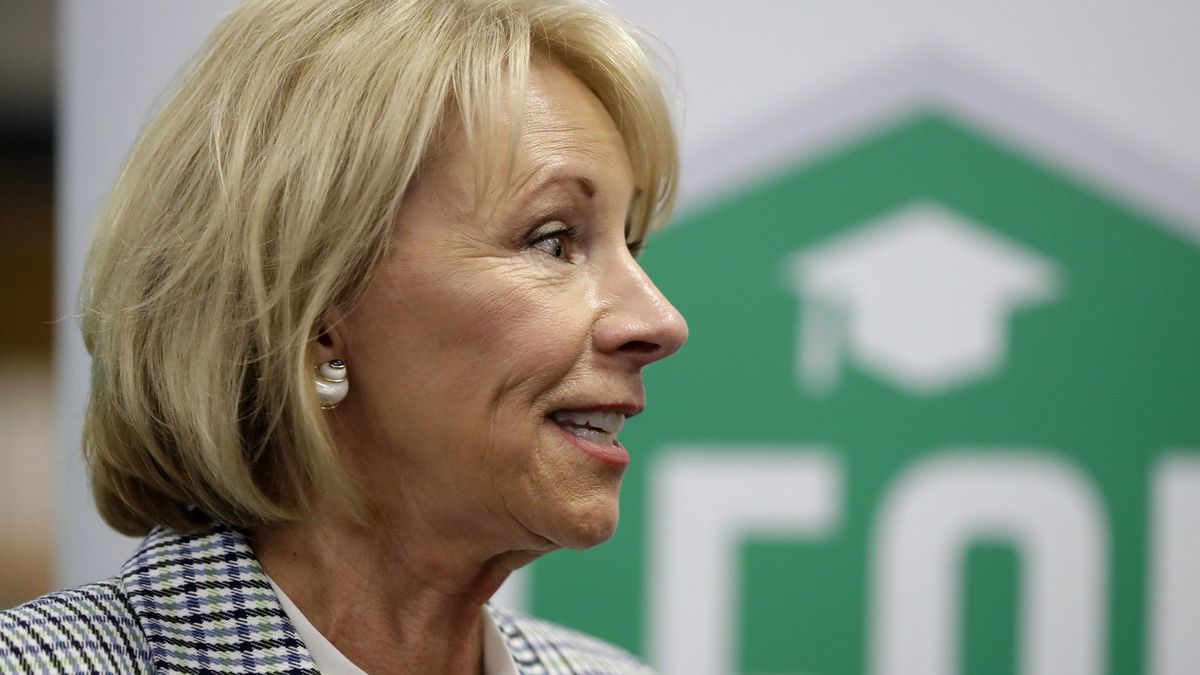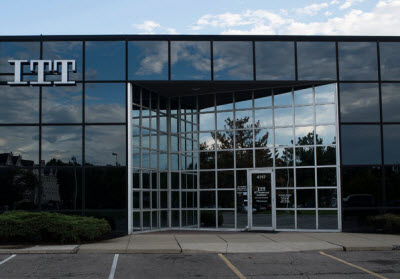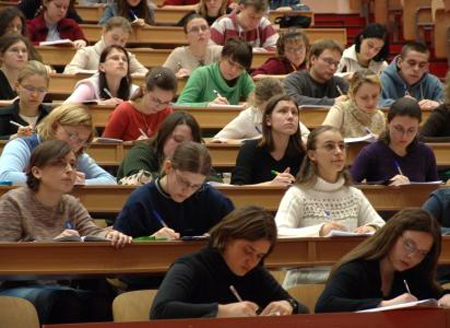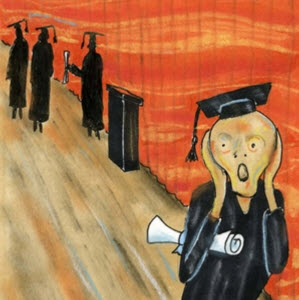education
A coddled generation wants everything "safe"
Sep 16 2015
We have returned this from over two months ago given what has been happening on campuses since.
Three American military servicemen sprang to action and subdued a terrorist wielding an AK-47, a handgun and a box cutter on a train from Amsterdam to Paris, preventing what could have been a slaughter.
At almost the same time, two West Point graduates completed the grueling 61-day (at a minimum) U.S. Army Ranger training ordeal as the first women ever to do so.
Sounds like America has bred another generation of courageous and resolute character that we can be proud of, doesn't it? Unfortunately, a very different breed seems to be coming along, found in the next slice of that generation that is now in college.
Education is meant to prepare us for the world. The college environment should teem with clashing ideas and ideals, stimulating curiosity and openness to discovery, teaching students to stand on their own, to think, to discourse on what they have learned, to debate controversial topics.
Instead, we hear of "triggers" and "trigger warnings" and "microaggressions" and a new obsession with "safety" on the part of students who have turned highly aggressive themselves in their demands that perceived affronts be penalized and suppressed. "Triggers" are occurrences — words, passages in literature, historical facts, etc. — that might upset certain people, and campus groups have seemingly sprouted everywhere to demand that "trigger warnings" appear in course descriptions and their syllabuses to protect the unaware.
This new ultra-sensitivity is viewed as the re-emergence of the "politically correct" dictates that scolded free speech in the late ’80s and early ’90s and — everything now requiring partisan labeling — is considered a liberal movement. Jonathan Chait writes in an essay in New York magazine that "Political correctness is a style of politics in which the more radical members of the left attempt to regulate political discourse by defining opposing views as bigoted and illegitimate".
Some examples
 A Muslim student at the University of Michigan wrote write a satirical column that spoofed the culture of taking offense at everything that he said pervades the campus. In so doing he had created a “hostile environment,” in which at least one staffer at the university newspaper, the Michigan Daily, felt threatened. When he refused the demand that he write a letter of apology to the staff, the Daily fired him, and women students littered his doorway with splattered eggs and hate messages such as "Everyone hates you, you violent prick".
A Muslim student at the University of Michigan wrote write a satirical column that spoofed the culture of taking offense at everything that he said pervades the campus. In so doing he had created a “hostile environment,” in which at least one staffer at the university newspaper, the Michigan Daily, felt threatened. When he refused the demand that he write a letter of apology to the staff, the Daily fired him, and women students littered his doorway with splattered eggs and hate messages such as "Everyone hates you, you violent prick".
 Four students wrote to the student newspaper at Columbia University objecting to a class discussion of Ovid's “Metamorphoses” they'd heard about from another student who said she was a survivor of sexual assault. The epic poem recounts the imagined history of the world with depictions of violence, sexual assault and the mythological rape of Persephone and Daphne. The professor's focus "on the beauty of the language and the splendor of the imagery" as opposed to the violence had "triggered" the student who "disengaged from the class discussion as a means of self-preservation" because "she did not feel safe in the class". "Like so many texts in the Western canon", the four wrote, "it contains triggering and offensive material" that "can be difficult to read and discuss as a survivor, a person of color, or a student from a low-income background". They relayed an idea from another section of the Literature Humanities course that students ought to be able to substitute their own choices of what to read. Toni Morrison, for example.
Four students wrote to the student newspaper at Columbia University objecting to a class discussion of Ovid's “Metamorphoses” they'd heard about from another student who said she was a survivor of sexual assault. The epic poem recounts the imagined history of the world with depictions of violence, sexual assault and the mythological rape of Persephone and Daphne. The professor's focus "on the beauty of the language and the splendor of the imagery" as opposed to the violence had "triggered" the student who "disengaged from the class discussion as a means of self-preservation" because "she did not feel safe in the class". "Like so many texts in the Western canon", the four wrote, "it contains triggering and offensive material" that "can be difficult to read and discuss as a survivor, a person of color, or a student from a low-income background". They relayed an idea from another section of the Literature Humanities course that students ought to be able to substitute their own choices of what to read. Toni Morrison, for example.
Peggy Noonan, Reagan speechwriter and columnist at The Wall Street Journal, is having none of the Columbia whinge. "I won’t name the four undergraduate authors, because 30 years from now their children will be on Google, and because everyone in their 20s has the right to be an idiot".
 The Sexual Assault Task Force at Brown works to make the university a safe place for rape victims, insulated from anything that might trigger memories of trauma. This alone says a surprising amount of student encounters there are viewed as rape. Anyway, the announcement of a debate about campus sexual assault between the founder of website feministing.com and a libertarian who was likely to call this a “rape culture” set off alarms. The task force got Brown’s president, Christina Paxson, to stage a simultaneous competing talk to provide “research and facts” about “the role of culture in sexual assault”. And for those uncomfortable with both approaches to the subject, a “safe space” to which to retreat would be provided.
The Sexual Assault Task Force at Brown works to make the university a safe place for rape victims, insulated from anything that might trigger memories of trauma. This alone says a surprising amount of student encounters there are viewed as rape. Anyway, the announcement of a debate about campus sexual assault between the founder of website feministing.com and a libertarian who was likely to call this a “rape culture” set off alarms. The task force got Brown’s president, Christina Paxson, to stage a simultaneous competing talk to provide “research and facts” about “the role of culture in sexual assault”. And for those uncomfortable with both approaches to the subject, a “safe space” to which to retreat would be provided.
To explain, Judith Shulevitz, who writes on feminism, culture and science at The New York Times was told that students want their colleges to have "safe spaces" to protect them from discomfiting or distressing viewpoints. The safe room at Brown, she was told, is equipped "with cookies, coloring books, bubbles, Play-Doh, calming music, pillows, blankets and a video of frolicking puppies, as well as students and staff members trained to deal with trauma". The place was used by a couple of dozen people during the lectures who felt "bombarded by a lot of viewpoints that really go against my dearly and closely held beliefs,” said one student.
Former Barnard president Judith Shapiro called this a reinforcement of students' “self-infantilization”. For their fragility, they've been given the name "snowflakes". Eric Posner, a professor at the University of Chicago Law School, wrote in Slate that universities cosset students more than in the past because today’s undergraduates are more juvenile. “Perhaps overprogrammed children engineered to the specifications of college admissions offices no longer experience the risks and challenges that breed maturity”, he wrote. Back to examples:
 At the end of last year, law school students at Harvard petitioned their administrations to delay exams in consideration of those "traumatized" by the shooting death of an unarmed black teenager in Ferguson, Mo., and the choking death of an unarmed black man on Staten Island, NY. If they did not delay, Harvard would "allow the systematic underperformance of a great many students of color and allies" because "we cannot walk away from our pain". Law students at Columbia and Georgetown universities made similar requests. This prompted media comments along the line of, wait until they see what it is like to practice law on the outside.
At the end of last year, law school students at Harvard petitioned their administrations to delay exams in consideration of those "traumatized" by the shooting death of an unarmed black teenager in Ferguson, Mo., and the choking death of an unarmed black man on Staten Island, NY. If they did not delay, Harvard would "allow the systematic underperformance of a great many students of color and allies" because "we cannot walk away from our pain". Law students at Columbia and Georgetown universities made similar requests. This prompted media comments along the line of, wait until they see what it is like to practice law on the outside.
 At Oberlin, a document warns that Chinua Achebe’s "Things Fall Apart", a novel set in post-colonial Nigeria and widely included in the reading lists of American schools, will “trigger readers who have experienced racism, colonialism, religious persecution, violence, suicide and more”. So if a student has experienced any one of these — say racism in the U.S. — can the student opt-out of reading the book so as not to be exposed to the author's experience with the other triggers — colonialism, religious persecution, etc. — and the dangers endured by people living under the oppressive cultures of other lands? How is the student's understanding of the world advanced if these realities are avoided?
At Oberlin, a document warns that Chinua Achebe’s "Things Fall Apart", a novel set in post-colonial Nigeria and widely included in the reading lists of American schools, will “trigger readers who have experienced racism, colonialism, religious persecution, violence, suicide and more”. So if a student has experienced any one of these — say racism in the U.S. — can the student opt-out of reading the book so as not to be exposed to the author's experience with the other triggers — colonialism, religious persecution, etc. — and the dangers endured by people living under the oppressive cultures of other lands? How is the student's understanding of the world advanced if these realities are avoided?
 At other colleges, activists demand that a trigger warning be affixed to Shakespeare's "The Merchant of Venice" because of its anti-Semitism and to Mark Twain's American classic, "Huckleberry Finn", because of racism, despite it being a story of the bonding of races. And then there was the Rutgers student who wanted "The Great Gatsby" to be approached with caution because of “suicide, domestic abuse and graphic violence”.
At other colleges, activists demand that a trigger warning be affixed to Shakespeare's "The Merchant of Venice" because of its anti-Semitism and to Mark Twain's American classic, "Huckleberry Finn", because of racism, despite it being a story of the bonding of races. And then there was the Rutgers student who wanted "The Great Gatsby" to be approached with caution because of “suicide, domestic abuse and graphic violence”.
Gatsby? Seriously? Will anything escape trigger-warnings? Will course syllabuses be reduced to children's books, or those coloring books in Brown's safe house? A Wall Street Journal columnist calls this sort of college "just a $240,000 extension of kindergarten".
For the few who have experienced actual trauma, avoiding reminders runs opposite to the standard advice, which is that "controlled exposure" offers the best chance of abatement. For others, who are just shying from conflict found in literature or history, this is impossibly delicate. The "Iliad" has vivid descriptions of savage hand-to-hand combat and agonizing death. But to hide from these accounts is both to stay ignorant of mankind's world thousands of years ago and to pass by one of the greatest poems ever written. Missing out should be the trigger warning.
When they step out into the world, how does this new breed of student expect the world to re-order itself as they demanded in the comfort zone they created at college? "They’ll be unprepared for the social and intellectual headwinds that will hit them as soon as they step off the campuses whose climates they have so carefully controlled", said Shulevitz. Life will offer opportunity and freedom, but also jarring exposure to ignorance and bigotry and confrontations that require a spinal column. "What are we doing to our students if we encourage them to develop extra-thin skin in the years just before they leave the cocoon of adult protection and enter the workforce?", ask Greg Lukianoff and Jonathan Haidt at The Atlantic
avoidable hurts
Microaggressions are mostly different from triggers, although one wouldn't think so judging from a sit-in staged at UCLA to protest microaggressions, one of which was the offense committed by a professor who corrected a student who spelled "indigenous" with an uppercase I. His "lowercasing the capital I was an insult to the student and her ideology", the group claimed.
It gets weirder: A theater group at Mount Holyoke College recently announced "The Vagina Monologues" would no longer be performed, partly because that would be a microaggression for those women in the audience not possessed of vaginas.
Microaggressions are the small, and often as not, unintentional slights that can occur between students of different backgrounds. The more typical microaggression is something said in conversation when one student inadvertently hurts another. While that sounds just like the hyper-delicacy of the triggered, making students aware of certain sensitivities is its own contribution to a young person's education.
We came upon an example that made this clear. Phillips Academy, the prep school in Andover, Massachusetts, usually referred to as Andover, boasts of a student body of "youth from every quarter" and backs up that claim with a current enrollment from 45 states and 38 countries, 42% of color, and about half of whom get need-blind financial aid — a mix that, apart from the kids being homogeneous in smarts, prompted the headmaster to say that, "This is the most diverse environment that most of these kids will ever live in". That makes for a compost in which the youths need some training to make them aware of the very different backgrounds that have raised up those who are now their peers. This Andover website lists close to three dozen slights reported by students which makes a good case that microaggressions are real and, more important, that making all these examples apparent to a student body in all-school assemblies could go a long way toward advancing understanding, consideration and tolerance that could hopefully carry forward into life.
weaponization instead
But rather than emerging with a new-found worldly sophistication, too often, students have gone on to seek out microaggressions to deploy as weapons, on the lookout for items in their college courses they can use against faculty. And some universities — those presumed citadels of free speech — have caved in, joining their persnickety students by ruling against the use of certain terms in classrooms that might upset those who must always be guaranteed a "safe space".
Janet Napolitano was Obama's Secretary of Homeland Security and is now president of the University of California. From her desk came instructions to deans and department chairs advising against use of certain phrases such as, “There is only one race, the human race” because it eradicates “the significance of a person of color’s racial/ethnic experience and history”, or “America is the land of opportunity”, virtually a motto but which we are now told could be taken as “People of color are lazy and/or incompetent and need to work harder”. This coming from the same university whose Berkeley campus was the scene of the demonstrations and sit-ins on the nightly news by students ardently fighting for free speech in the 1960s.
The University of New Hampshire went all out for fear of offending Latino students. Avoid the word "American", says the school's "Bias-Free Language Guide", because that assumes the U.S. is the only country in the hemisphere. Say "U.S. citizen" instead.
faculty on edge
A college professor sent an article to Vox.com in June titled, "I'm a liberal professor, and my liberal students terrify me". He wrote under a pseudonym, which proves his point. Fearful for their jobs, he and his colleagues comb through the material they assign to students, pruning whatever could send a student complaining to the dean that he or she has been offended. He quotes Northwestern University professor Laura Kipnis who wrote, "Emotional discomfort is [now] regarded as equivalent to material injury, and all injuries have to be remediated". At Brandeis University a professor was pronounced guilty of racial harassment, denied a hearing and assigned a monitor in his classes after he criticized the use of the word “wetbacks” in his Latin American Politics course.
Nicking a student's feelings or making them feel "unsafe" in the presence of uncomfortable thought, however appropriate to the course they are taking, "can now get a teacher into serious trouble", says the Vox contributing professor. How could a professor now dare say “affirmative action is racist”, despite that being the point of affirmative action. He writes a blog, and when some liberals called him paranoid, he said, "I guarantee you that these people do not work in higher education, or if they do, they are at least two decades removed from the job search".
So what's going on here? The answer is a reversal of college-student roles. College administrations now kow-tow to the students; one hears the word "customer". It's those soaring tuitions, eagerly paid for by government-issued student loans, that the administrators want to make sure keep coming. Those "academic freedom" spouting professors had better get out of the way.
And as for how the students got that way and what is on its way, we have this in a letter to the Journal: "If you think the college students of today are 'snowflakes', wait until you see what is next. Thanks to all of those helicopter moms who raised snowflakes, we now have the Apache Helicopter Moms who swoop down and fix everything for their children. As an elementary school teacher, I see this on a daily basis. Students aren’t held accountable for anything, and parents are continually making excuses for their behavior.
2 Comments
education
Sending the bill to the taxpayer
Apr 20 2015
Student loan debt has reached crisis proportions and shows no sign of abating. It has reached $1.16 trillion, according to the New York Federal 
Reserve, with $31 billion added in the 4th quarter of last year alone. The aggregate is more than credit card debt and auto loans and is exceeded only by home mortgages. Incentives on all sides have seen to a situation that has veered out of control.
 National policy is to create a college-educated public and a globally competitive workforce, so it is not too great an exaggeration to say that the government willingly loans money to any student, of any qualification, to take any course, at any school, at any price.
National policy is to create a college-educated public and a globally competitive workforce, so it is not too great an exaggeration to say that the government willingly loans money to any student, of any qualification, to take any course, at any school, at any price.
 Colleges and universities have been overjoyed by this arrangement. With the government willing to pay whatever is the going rate, the rate has been going ever upward, causing borrowing limits to rise so that students can borrow ever more to pay the higher tuitions.
Colleges and universities have been overjoyed by this arrangement. With the government willing to pay whatever is the going rate, the rate has been going ever upward, causing borrowing limits to rise so that students can borrow ever more to pay the higher tuitions.
 Then there is Congress, which charges interest on the loans. Those just starting out in life are viewed as a kind of profit center for the government, with vigorous opposition to lowering the rates. The base rate was once an indefensible 6.8%, was reduced to 3.4% in 2013, but is on the rise. Depending on who is the borrower and the degree sought, current rates run from 4.66% to 7.21% — this at a time in which banks can still borrow from the Fed at close to 0%.
Then there is Congress, which charges interest on the loans. Those just starting out in life are viewed as a kind of profit center for the government, with vigorous opposition to lowering the rates. The base rate was once an indefensible 6.8%, was reduced to 3.4% in 2013, but is on the rise. Depending on who is the borrower and the degree sought, current rates run from 4.66% to 7.21% — this at a time in which banks can still borrow from the Fed at close to 0%.
 Students earn their share of blame by spending their loans on courses that simply interest them — what The Weekly Standard neatly summed up as "trendy classes on race, class, and gender" — but are of no interest to employers. If they graduate, they too often have earned their degrees in fields with limited employment prospects or that don't pay enough for them to retire their debt.
Students earn their share of blame by spending their loans on courses that simply interest them — what The Weekly Standard neatly summed up as "trendy classes on race, class, and gender" — but are of no interest to employers. If they graduate, they too often have earned their degrees in fields with limited employment prospects or that don't pay enough for them to retire their debt.
the due bill
In 1993 that debt for the average undergraduate on leaving college was $9,300 (inflation-adjusted). But the quartet of players above has combined to produce an expected debt load of $35,000 for the student leaving college this year (his or her parents may have borrowed a good deal more). Even if our student were able unfailingly to pay about $200 a month, that amount, borrowed at the lowest 4.66% rate, would still take nearly 25 years to pay down, interest having added some $20,000 to the principal.
softening the blow
There was a leniency provision put in place during the Clinton administration when the federal government was only in the business of guaranteeing student loans made by banks. Loan repayments were limited to 20% of net income after deducting an allowance for living expenses, and any balance after 25 years of payment was forgiven.
With the banks and the economy weakened by the 2008 crash, a bill amending the Affordable Care Act ended the bank guarantees, turned the Education Department a direct lender to students, cut the maximum payment from 20% to 10% no matter how much was owed, and cancelled debt after 20 years rather than 25.
As tuition rose and the burden for students worsened, President Obama made further changes — a more generous deduction for living costs reducing the income subject to the 10%, and wiping clean remaining debt after only 10 years for persons working in "public service" (liberally defined) and
not even requiring them to declare the forgiven balance as effective income for tax treatment. Steam rises about that one from the editorial desk at The Wall Street Journal — the special treatment accorded by Obama to those whom the writers pointedly call "aspiring community organizers" and "do gooders".
slowing the flow
As if fighting against the colleges and the Congress for the harm they have visited on students, the administration offers additional ways to mitigate payments. If a student returns to college for additional courses or an advanced degree, payment on prior debt is suspended. A benefit called "forbearance" is freely granted by loan-servicing companies; it suspends payments for as long as three years from debtors who can show simply that their payment to income ratio is problematic. Forbearance can be granted even after a few payments have been missed, and it wipes the delinquency slate clean. Debtors have flocked to this avoidance option; already, payments on $125 billion in loans are in suspense under the forbearance plea.
Interest is accruing all the while, of course, so by taking advantage of forbearance or other deferrals, students add to the ultimate debt they owe, or that will be left to taxpayers to pay come 10 or 20 years when the debt is cancelled.
Three years ago, when the administration provided an estimate, $41,000 was the average amount of debt forgiven under the income-based repayment plans.
check isn't in the mail
These many easements have caused the number of loans in default to gradually decline — by 1% between 2013 and 2014 — to the current level of 13.7%. But loans can be delinquent for
nine months before they are counted as being in default and in addition, as BloombergBusinessWeek points out, roughly half of loans are in some form of payment deferment which, for a sizable portion may be hiding difficulties in making payments.
The 13.7% also is presumably measured against the full universe of student loans, which includes active students from whom no payment is as yet due. If measured against loans that have come due, the default percentage rises to an alarming 19.8%, says a Journal op-ed citing the Education Department as its source. That's 7.1 million borrowers with $103 billion in balances outstanding.
The bill for forgiven debt or default is sent to the taxpayers. There will then be the fundamental unfairness that those who never had the opportunity to go to college could find themselves paying for those who did, and those who did will be paying twice.
the for-profit plague
By far the most serious pathogen in the student loan contagion are the for-profit colleges, which we covered some time ago in a story titled "For Profit Colleges — A National Disgrace". The scent of easy government money that students can indiscriminately spend set large corporations, private equity and even hedge funds baying in the chase to fund any outfit that calls itself an educational institution. Some 2,000 self-proclaimed colleges sprung up, willing to accept any applicant waving proof of a loan.
The outcome has been that, while the for-profits account for only 12% of students, they account for nearly half of all loan defaults. Only 32% of students stay to graduate from the four-year programs, earning degrees viewed as inferior by employers. The other two-thirds drop out with nothing to show for their mistake but a debt that Congress has made sure cannot be discharged in bankruptcy court. Of 21 institutions that last fall were running default rates so high that they could lose the right to accept federally issued students loans, 20 of them were from the private, for-profit ranks.
what's the answer?
Certainly the greatest failing has been the willingness to pay any price with the result that colleges and universities gleefully raised tuitions to draw in more money. Indeed, they even compete for students, bidding for superstar professors who are promised they will barely have to teach, and adding so-called "amenities" from welcoming dormitory rooms to food courts that accommodate the latest fetishes. The student of fifty years ago, when Spartan rooms were minimally heated and certain dishes served up in the dining hall were awarded unprintable names, would be stunned by a visit to a campus of today.
The loan system let this happen, with students and taxpayers the ultimate victims, by not restricting loan amounts to force down tuitions. Fed by perverse incentives, college tuitions soared by 79.5% in just the ten years between 2003 and 2013, says the Labor Department. Compare that to the 43.1% rise in medical costs and the 26.7% increase in the consumer price index. This has been going on unchecked for decades. Since 1978, tuitions have risen by 1,225%, nearly twice the rate of health care costs.
The Obama administration is developing a rating system meant to staunch the flow of student loan dollars to poorly performing schools. First announced in 2013, its ratings criteria are scheduled to be announced this summer. But progress has been slowed by factions holding their self-interest higher than that of our youth.
College administrators are of course up in arms, fearful of being made accountable for what they produce. And enter the politicians. The Republicans who are outraged at the bad debt write-offs of the administration's loan forgiveness programs are the same as those opposed to any federal oversight of education that might cure the problem. Democrats are concerned that inferior colleges in their districts might see less money and fret about what might happen to liberal arts programs.
The ratings criteria are no easy matter and a subject on their own — our educational system should not be based solely on whether graduates get jobs — but some scheme is essential to shut off parasitic operations that only dupe students and harm their lives.
But these fixes have to do with eliminating waste and fraud in the programs in place. Of greater concern is how the country should think of the role of higher education going forward. Once again, America is an outlier in a world that places a much higher value on education. To be sure its youth is educated, Europe believes college should be essentially free, with tuition costing just a few hundred dollars, as seen by scrolling through this website. High taxes pay for it. The U.S. has gone in the opposite direction, with heavy tax cuts across the board, except for a few percentages added recently to the topmost brackets. The conservative right wing equates taxes with socialism and preaches a free market doctrine that believes that our universities should be at liberty to charge prohibitively, blocking millions from a higher education and saddling the rest with a debt that can take much of their lives to repay. An Obama proposal for free community college has been hooted down, and to be fair, was probably too hastily considered given the damage that would do to funds and applicants at four-year universities. Some think education should be entirely free.
All of which says that we have not really considered what the answer should be.
1 Comment







